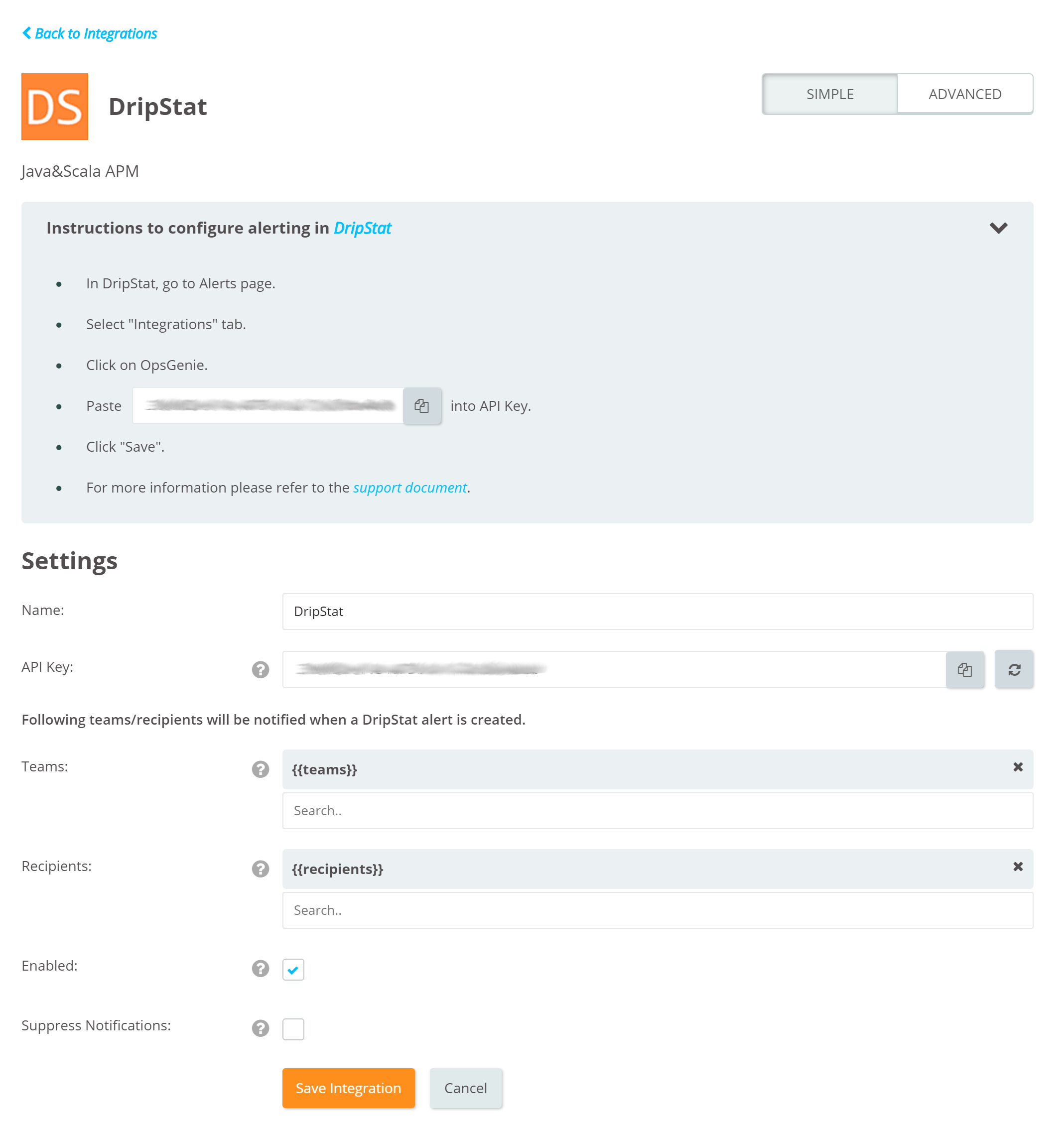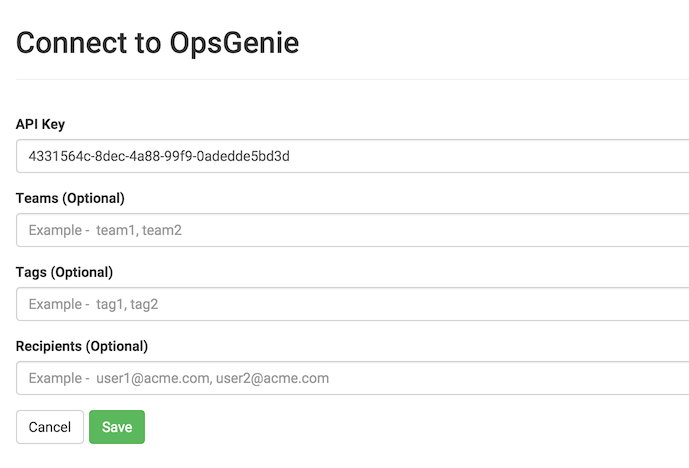DripStat Integration
DripStat is a Java and Scala APM solution that offers powerful features, such as Code Level Visibility and JVM Monitoring etc. Opsgenie is an alert and notification management solution that is complementary to DripStat.

What does Opsgenie offer to DripStat users?
Use Opsgenie's DripStat integration to send DripStat alerts to Opsgenie API with detailed information. Opsgenie acts as a dispatcher for DripStat alerts, determines the right people to notify based on on-call schedules– notifies via email, text messages (SMS), phone calls, and iPhone & Android push notifications, and escalates alerts until the alert is acknowledged or closed.
Functionality of the integration
- When alert is created on DripStat, an alert is created in Opsgenie automatically through the integration.
Add DripStat integration in Opsgenie
- Please create an Opsgenie account if you haven't done so already.
- Go to Opsgenie's DripStat Integration page.
For Free and Essentials plans, you can only add the integrations from the Team Dashboards, please use the alternative instructions given below to add this integration.
- Specify who is notified of DripStat alerts using the Teams field. Auto-complete suggestions are provided as you type.
An alternative for Step 2) and Step 3) is to add the integration from the Team Dashboard of the team which will own the integration. To add an integration directly to a team, navigate to the Team Dashboard and open Integrations tab. Click Add Integration and select the integration that you would like to add.
- Copy the integration API key. Use this key in DripStat configuration.
- Click Save Integration.

Configuration on DripStat
- In DripStat, go to the Alerts page.
- Select "Integrations tab".
- Click on Opsgenie.
- Select "Opsgenie" as the action type.
- Paste the API key you copied into the "API Key" field.
- Click Save.

Dynamic fields (custom priority, payload, url, and headers) are not available for this integration because of being API-based integration.
Updated 6 months ago
